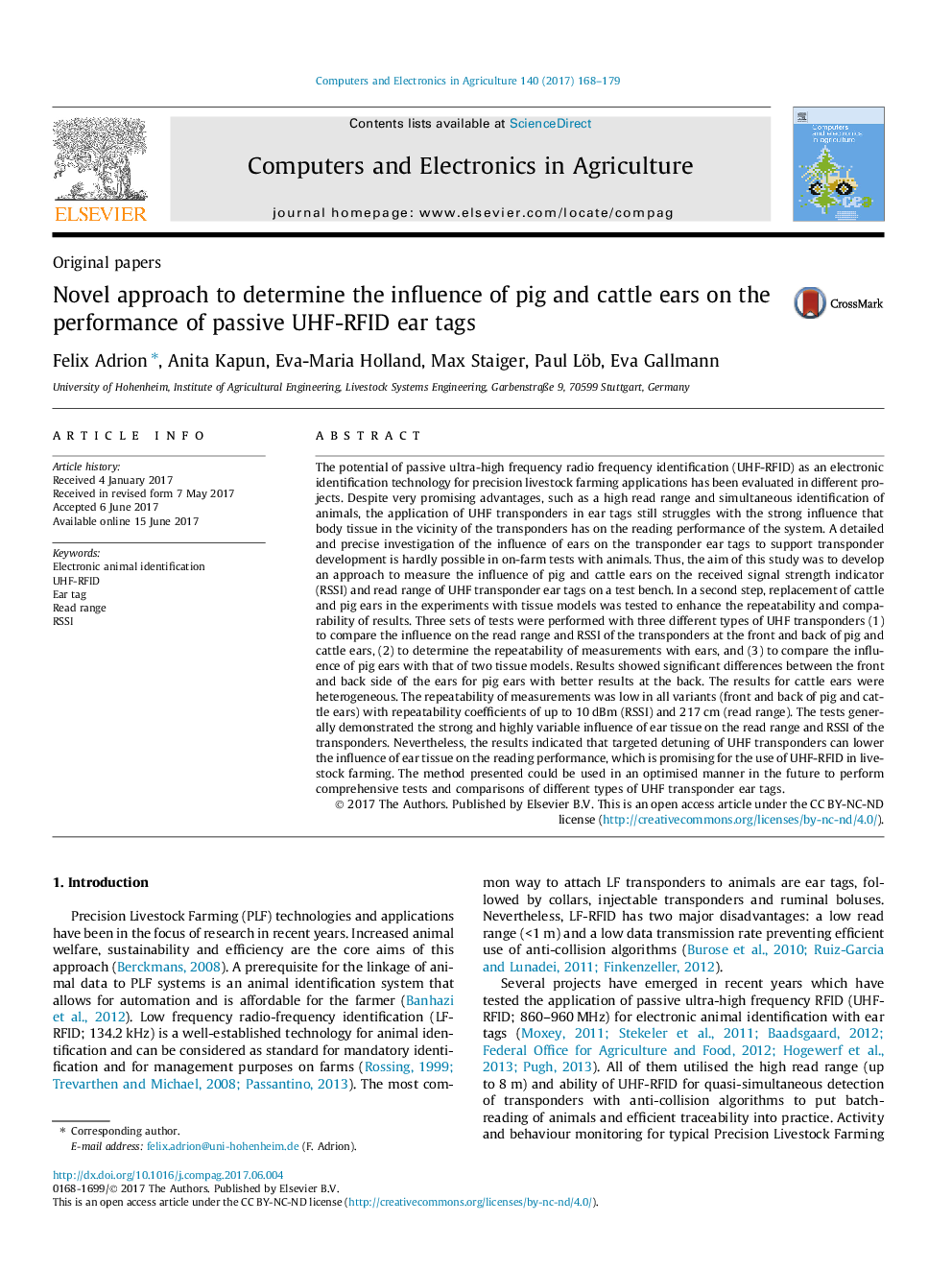| Article ID | Journal | Published Year | Pages | File Type |
|---|---|---|---|---|
| 6458582 | Computers and Electronics in Agriculture | 2017 | 12 Pages |
â¢Novel approach to determine the influence of ear tissue on UHF-RFID ear tags on a test bench.â¢First measurements of signal strength (RSSI) and read range of UHF-RFID ear tags with cattle and pig ears.â¢Test of two tissue models to replace pig and cattle ears for the standardisation of measurements.â¢Pig and cattle ears have a negative and highly variable influence on the RSSI and read range of UHF-RFID ear tags.â¢Targeted detuning of the transponders can lower the influence of ear tissue on UHF-RFID ear tags.
The potential of passive ultra-high frequency radio frequency identification (UHF-RFID) as an electronic identification technology for precision livestock farming applications has been evaluated in different projects. Despite very promising advantages, such as a high read range and simultaneous identification of animals, the application of UHF transponders in ear tags still struggles with the strong influence that body tissue in the vicinity of the transponders has on the reading performance of the system. A detailed and precise investigation of the influence of ears on the transponder ear tags to support transponder development is hardly possible in on-farm tests with animals. Thus, the aim of this study was to develop an approach to measure the influence of pig and cattle ears on the received signal strength indicator (RSSI) and read range of UHF transponder ear tags on a test bench. In a second step, replacement of cattle and pig ears in the experiments with tissue models was tested to enhance the repeatability and comparability of results. Three sets of tests were performed with three different types of UHF transponders (1) to compare the influence on the read range and RSSI of the transponders at the front and back of pig and cattle ears, (2) to determine the repeatability of measurements with ears, and (3) to compare the influence of pig ears with that of two tissue models. Results showed significant differences between the front and back side of the ears for pig ears with better results at the back. The results for cattle ears were heterogeneous. The repeatability of measurements was low in all variants (front and back of pig and cattle ears) with repeatability coefficients of up to 10Â dBm (RSSI) and 217Â cm (read range). The tests generally demonstrated the strong and highly variable influence of ear tissue on the read range and RSSI of the transponders. Nevertheless, the results indicated that targeted detuning of UHF transponders can lower the influence of ear tissue on the reading performance, which is promising for the use of UHF-RFID in livestock farming. The method presented could be used in an optimised manner in the future to perform comprehensive tests and comparisons of different types of UHF transponder ear tags.
